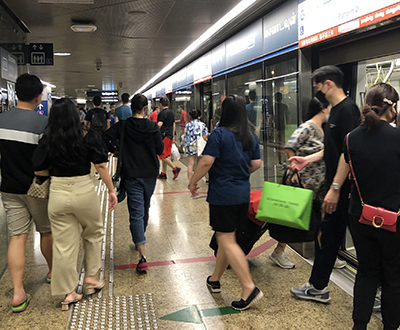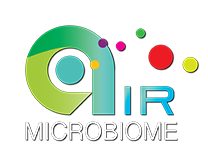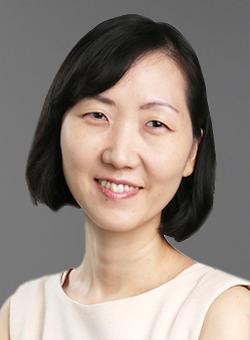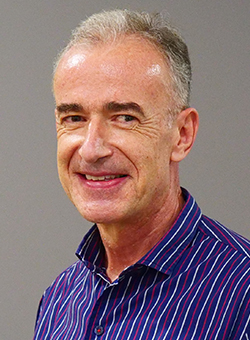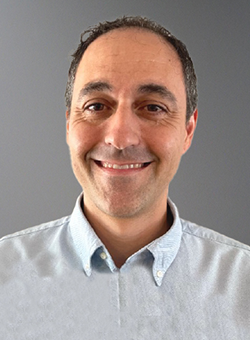Environmental genomics and surveillance
The Project
The air we breathe contains millions of microbes, yet we are largely unaware of what they are, what they do and how they respond to changing environmental conditions. Air is a key route of global microorganism cycling and a major source of human microbial exposure, but it remains the last of the Earth’s major ecosystems (after terrestrial and aquatic) to be explored for microbial life.
Each cubic meter of air contains thousands to millions of diverse microorganisms – fungi, bacteria, archaea, and viruses – aerosolised from humans and a variety of environmental sources, and influenced by factors including particle size, airflow, irradiation and humidity. Indoors, air is filtered and recirculated, and occupants and surfaces can act as sources and sinks, accumulating and resuspending settled or filtered biological and particulate matter. Evidence is emerging that airborne microorganisms in indoor spaces can differ substantially from outdoor communities, with less diversity and higher bacterial loads. However, the extent and impact of such changes on indoor and airborne microbial communities are not understood, particularly in the tropics.
SCELSE’s air microbiome programme encompasses Singapore’s urbanised tropical environment, and addresses the universality of bioaerosol community patterns across different geographic regions. As a tropical city-state, Singapore hosts a unique range of natural and artificial climatic conditions, to which airborne microbes respond, and addresses the universality of bioaerosol community patterns across geographic regions.
This multidisciplinary approach to investigate Singapore’s urban ecosystems addresses bioaerosol community composition and function, air microbiomes and human health, pathogen detection and modelling. ’Omics analysis provides an in-depth understanding of ultra-low biomass environments, with sampling designs informed by aerosol physics and theoretical frameworks based on ecology, public health implications and systems biology.
SCELSE air microbiome team adapted its bioaerosol analysis protocols and knowhow for the surveillance and analysis of airborne SARS-CoV-2, deploying its fleet of more than 40 air samplers across Singapore.
Environmental surveillance for infectious diseases via wastewater, at and upstream from a sewage treatment plant is undertaken (e.g., for SARS-CoV-2) and being developed (e.g., for dengue) with the aim of acquiring actionable community-level information needed to navigate disease outbreaks and control.
Topics include:
- Development of genomic technologies
- Bioinformatic analysis pipelines and infrastructure
- DNAir – Airborne isolate whole genome database
- MetaLIMS – A simple open-source
- Laboratory information management system for small metagenomic labs
-
Environmental surveillance of airborne microbial communities in the tropics and across different climate zones
- Pathogen surveillance and source tracking
- SARS-CoV-2 in air, on surfaces and in wastewater
- Dengue in wastewater
- Genomic forensics
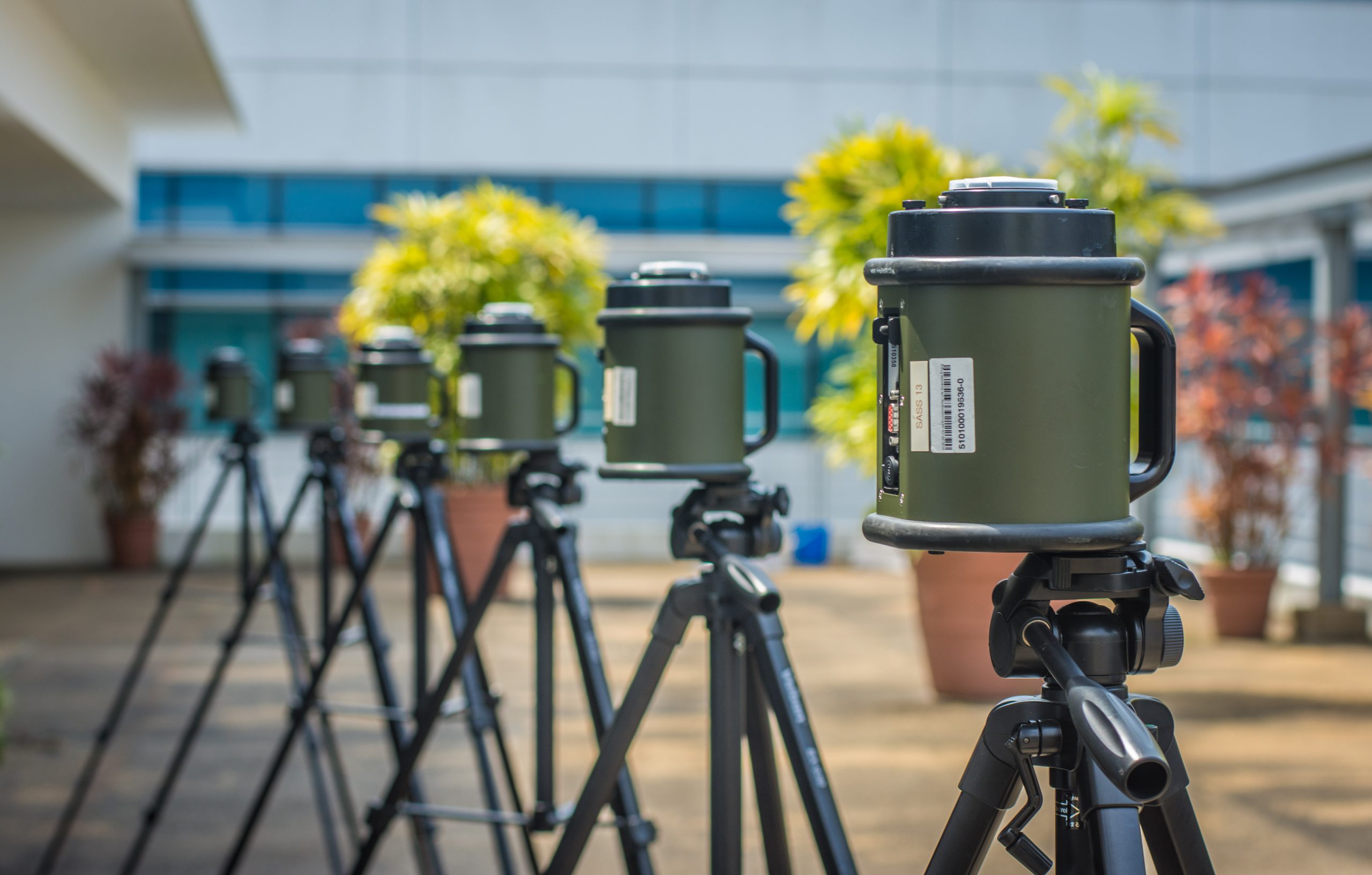
SCELSE has a fleet of high volumetric flow-rate air samplers (SASS 3100) for high temporal resolution analysis airborne biomass.

Association of airborne microorganisms with different altitudes in the lower troposphere was assessed using a meteorological tower.
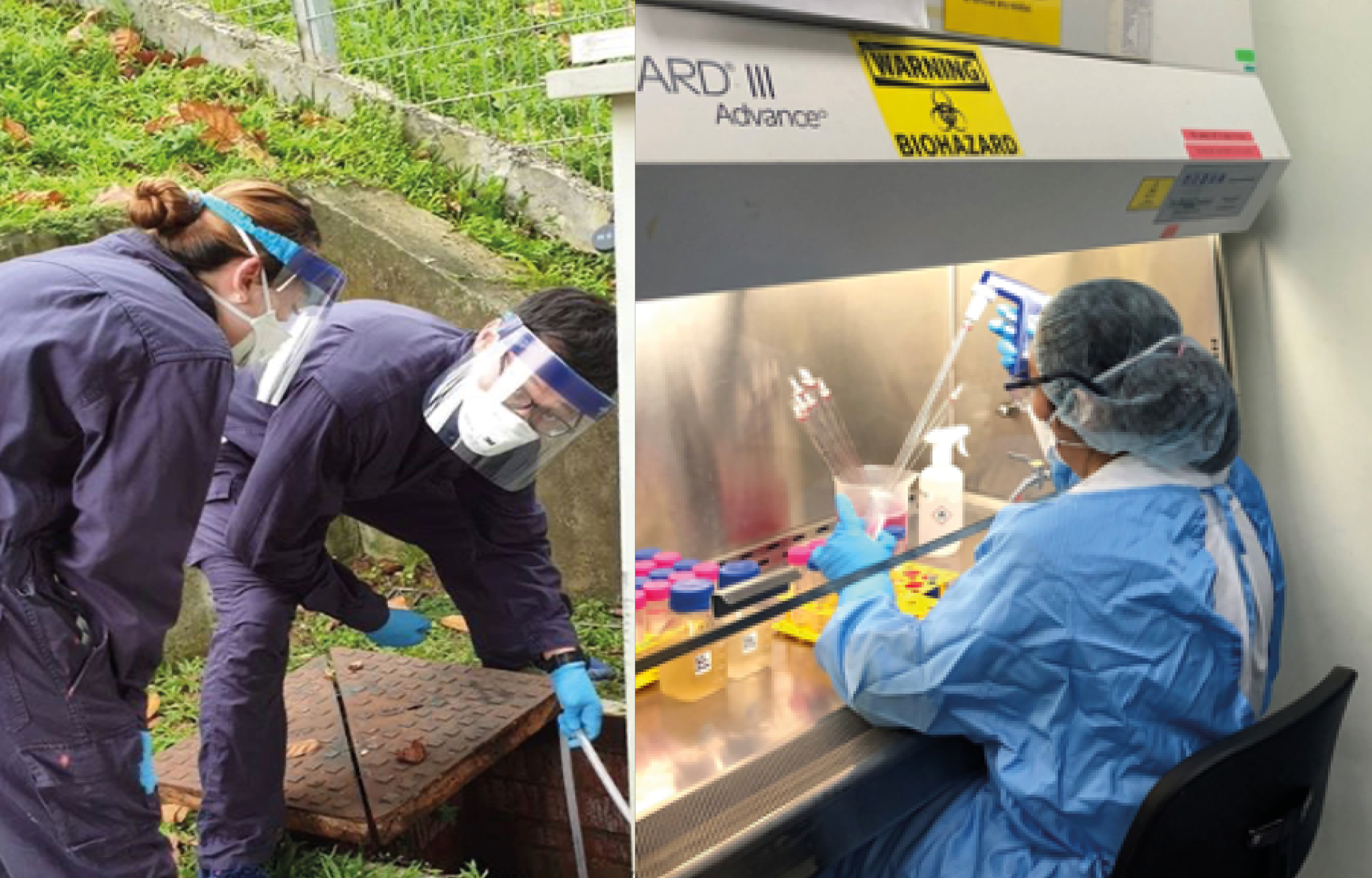
Pathogen surveillance of wastewater from sewerage maintenance holes.
The Project
The air we breathe contains millions of microbes, yet we are largely unaware of what they are, what they do and how they respond to changing environmental conditions. Air is a key route of global microorganism cycling and a major source of human microbial exposure, but it remains the last of the Earth’s major ecosystems (after terrestrial and aquatic) to be explored for microbial life.
Each cubic meter of air contains thousands to millions of diverse microorganisms – fungi, bacteria, archaea, and viruses – aerosolised from humans and a variety of environmental sources, and influenced by factors including particle size, airflow, irradiation and humidity. Indoors, air is filtered and recirculated, and occupants and surfaces can act as sources and sinks, accumulating and resuspending settled or filtered biological and particulate matter. Evidence is emerging that airborne microorganisms in indoor spaces can differ substantially from outdoor communities, with less diversity and higher bacterial loads. However, the extent and impact of such changes on indoor and airborne microbial communities are not understood, particularly in the tropics.
SCELSE’s air microbiome programme encompasses Singapore’s urbanised tropical environment, and addresses the universality of bioaerosol community patterns across different geographic regions. As a tropical city-state, Singapore hosts a unique range of natural and artificial climatic conditions, to which airborne microbes respond, and addresses the universality of bioaerosol community patterns across geographic regions.
This multidisciplinary approach to investigate Singapore’s urban ecosystems addresses bioaerosol community composition and function, air microbiomes and human health, pathogen detection and modelling. ’Omics analysis provides an in-depth understanding of ultra-low biomass environments, with sampling designs informed by aerosol physics and theoretical frameworks based on ecology, public health implications and systems biology.
SCELSE air microbiome team adapted its bioaerosol analysis protocols and knowhow for the surveillance and analysis of airborne SARS-CoV-2, deploying its fleet of more than 40 air samplers across Singapore.
Environmental surveillance for infectious diseases via wastewater, at and upstream from a sewage treatment plant is undertaken (e.g., for SARS-CoV-2) and being developed (e.g., for dengue) with the aim of acquiring actionable community-level information needed to navigate disease outbreaks and control.
Topics include:
- Development of genomic technologies
- Bioinformatic analysis pipelines and infrastructure
- DNAir – Airborne isolate whole genome database
- MetaLIMS – A simple open-source
- Laboratory information management system for small metagenomic labs
-
Environmental surveillance of airborne microbial communities in the tropics and across different climate zones
- Pathogen surveillance and source tracking
- SARS-CoV-2 in air, on surfaces and in wastewater
- Dengue in wastewater
- Genomic forensics

SCELSE has a fleet of high volumetric flow-rate air samplers (SASS 3100) for high temporal resolution analysis airborne biomass.

Association of airborne microorganisms with different altitudes in the lower troposphere was assessed using a meteorological tower.

Pathogen surveillance of wastewater from sewerage maintenance holes.
Goal
SCELSE’s Air Microbiome integrated researcy focuses on Singapore’s urbanised tropical environment. Modern tropical locations are unique because they offer a range of natural and artificial climatic conditions, to which the microbes respond. Central ventilation and cooling systems may quickly bring relief to the hot ambient temperatures and high humidity, but this action may result in changes to the air microbial composition, function and activity. Increasing numbers of people are spending more and more time indoors, immersed in surrounding microbial conditions that have yet to be discerned. Exercising control over the conditions of circulating air such as pressure and humidity may provide a means to reduce or eliminate potential health risks.
SCELSE’s multidisciplinary approach to investigate Singapore’s urban ecosystems specifically addresses bioaerosol community composition and function, air microbiomes and human health, pathogen detection and modelling. ‘Omics analysis provides an in-depth understanding of ultra-low biomass environments, with sampling designs informed by aerosol physics and theoretical frameworks based on ecology, public health implications and systems biology. SCELSE is also developing surveillance approaches that combine multidisciplinary technologies for a rapid understanding of the transport and transmission of airborne pathogen
Projects
Urban Air Microbiomes (Supervisory team: Prof Stephan Schuster)

The microorganisms around us in air (including fungi, bacteria, archaea and viruses) remain poorly understood compared to environments such as soil or water, especially in the tropics. To address these gaps, SCELSE investigates the identity and function of airborne microorganisms in indoor and outdoor environments in Singapore; and studies sources and sinks to identify where the airborne microbes come from. The urban air microbiomes project includes establishing protocols for sample collection and processing, capable of collecting enough biological material from the air for sequencing and DNA analysis. High-volume filter-based samplers are used to collect microorganisms for DNA extraction, while high-volume liquid cyclonic samplers are used in parallel for imaging with bright field, fluorescence and scanning electron microscopy. In addition, airborne microorganisms are isolated from air using agar plates and their whole genomes will then be sequenced to build a database, which would be the first comprehensive collection of airborne microorganisms in tropical environment. Our outdoor air sampling project involved sampling on campus every week over a year, five consecutive days with 24-hour sampling, and monthly sampling at Primary Forest in Nature Reserve. Our findings are that microorganisms have their own daily (diel) cycles and their responses vary according to different conditions, such as temperature, relative humidity, UV, and rainfall. We sample outdoor air at sites distributed temporally and spatially across Singapore and globally to identify microbes locally and globally distributed. Additionally, we also sample indoor air to understand correlation with airborne and human respiratory microbiome.
For more information, please contact:
Prof Stephan Schuster
SCSSchuster@ntu.edu.sg
Microbiology under supercritical CO2 and high pCO2 (Supervisory team: Prof Janelle Thompson)

The microorganisms around us in air (including fungi, bacteria, archaea and viruses) remain poorly understood compared to environments such as soil or water, especially in the tropics. To address these gaps, SCELSE investigates the identity and function of airborne microorganisms in indoor and outdoor environments in Singapore; and studies sources and sinks to identify where the airborne microbes come from. The urban air microbiomes project includes establishing protocols for sample collection and processing, capable of collecting enough biological material from the air for sequencing and DNA analysis. High-volume filter-based samplers are used to collect microorganisms for DNA extraction, while high-volume liquid cyclonic samplers are used in parallel for imaging with bright field, fluorescence and scanning electron microscopy. In addition, airborne microorganisms are isolated from air using agar plates and their whole genomes will then be sequenced to build a database, which would be the first comprehensive collection of airborne microorganisms in tropical environment. Our outdoor air sampling project involved sampling on campus every week over a year, five consecutive days with 24-hour sampling, and monthly sampling at Primary Forest in Nature Reserve. Our findings are that microorganisms have their own daily (diel) cycles and their responses vary according to different conditions, such as temperature, relative humidity, UV, and rainfall. We sample outdoor air at sites distributed temporally and spatially across Singapore and globally to identify microbes locally and globally distributed. Additionally, we also sample indoor air to understand correlation with airborne and human respiratory microbiome.
For more information, please contact:
Prof Stephan Schuster
SCSSchuster@ntu.edu.sg


